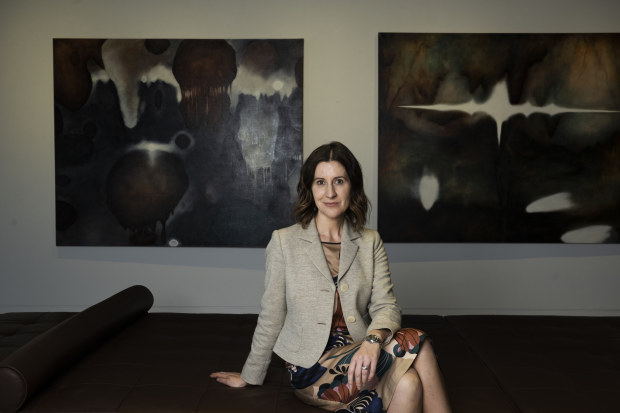‘Get the job done’: One in two lawyers use AI

One in two lawyers in Australia and New Zealand have already used generative artificial intelligence to perform day-to-day tasks and almost the entire profession believe it will change how legal work is carried out in future.
These were the key findings of a recent survey of more than 560 lawyers and legal professionals by legal information and analytics provider LexisNexis, which found that in-house lawyers were adopting the tools more quickly than their law firm counterparts.

Allens chief innovation and legal solutions officer Lisa Kozaris: “While it certainly doesn’t replace the work that a lawyer would do, it really gets them to an advanced first draft much more quickly.” Louise Kennerley
Drafting emails and conducting legal research were the most popular applications of generative AI. The research found 18 per cent used it for the former and 15 per cent used it for the latter.
Other popular uses included summarising documents, understanding legal concepts and improving work quality and efficiency.
Allens chief innovation and legal solutions officer Lisa Kozaris said the survey’s findings aligned with the law firm’s experience of generative AI.
She told The Australian Financial Review that lawyers at the firm were mostly using the technology to summarise lengthy documents, compare clauses across different documents and identify key points and action items from meetings.
Others use it to check the tone of an email, translate documents or help explain technical concepts such as “spinning reserve” in power generation.
“It’s not to be used instead of research, but [using it] to give an initial sense of a technical concept has been another use case,” Ms Kozaris said.
Lawyers at the firm have access to Microsoft Copilot and two in-house tools: Chronology Plus, which helps lawyers create and present chronologies, and Airlie, the law firm’s own version of ChatGPT that was developed with Microsoft and built on the tech giant’s Azure platform.
“While it certainly doesn’t replace the work that a lawyer would do, it really gets them to an advanced first draft much more quickly,” Ms Kozaris said, adding that close to half the firm are using the tools every day.
“It means that lawyers can then really sort of apply their judgments and finesse the final work product, as opposed to doing summarisation or copying and pasting information.”
Ms Kozaris said Allens chose to develop its own version of ChatGPT so that lawyers could use the technology without sending client data beyond the company’s digital systems and without inadvertently training the next model of ChatGPT.
“We’ve developed a huge volume of documents from advising clients in lots of different sectors over many years, so we’re now experimenting with [pointing Airlie] to collections of our own knowledge, so that our lawyers can really [use the tool] with much more reliable data,” Ms Kozaris said.
‘It’s really about experimenting’
King & Wood Mallesons senior associate Kendra Fouracre said she used generative AI to draft, proof, edit and otherwise improve emails and other written communications sent to clients.
She said it was also helpful in transcribing and producing summaries of meetings.
“It’s really about experimenting, being curious and actually continually learning what generative AI is best for [in] the legal profession,” Ms Fouracre said.
To ensure the tools are used ethically and responsibly, KWM requires every lawyer to undergo mandatory training to understand the limitations of generative AI tools before they are allowed to use them. Ms Fouracre said this helped to maintain high standards of governance.
The LexisNexis survey found that almost all respondents (94 per cent) agreed generative AI would have an impact on routine tasks leading to significant efficiencies. But 52 per cent were also sceptical about generative AI’s ability to conduct legal research due to questions over its accuracy, traceability, completeness and ability to provide citations.
In-house lawyers lead the way
Greg Dickason, LexisNexis’ managing director for Asia and the Pacific, said the research also revealed that in-house lawyers were keener adopters of generative AI than their law firm counterparts.
Fifty-two per cent of in-house lawyers had already used AI, compared to 42 per cent in law firms, the research found.
Mr Dickason said this could be because in-house lawyers were less risk averse and unencumbered by billable hours.
“They’ll do whatever they can to get the job done,” he said, noting in-house lawyers often had to make do with fewer resources as well.
Subscribe to gift this article
Gift 5 articles to anyone you choose each month when you subscribe.
Subscribe nowAlready a subscriber?
Introducing your Newsfeed
Follow the topics, people and companies that matter to you.
Find out moreRead More
Latest In Workplace
Fetching latest articles